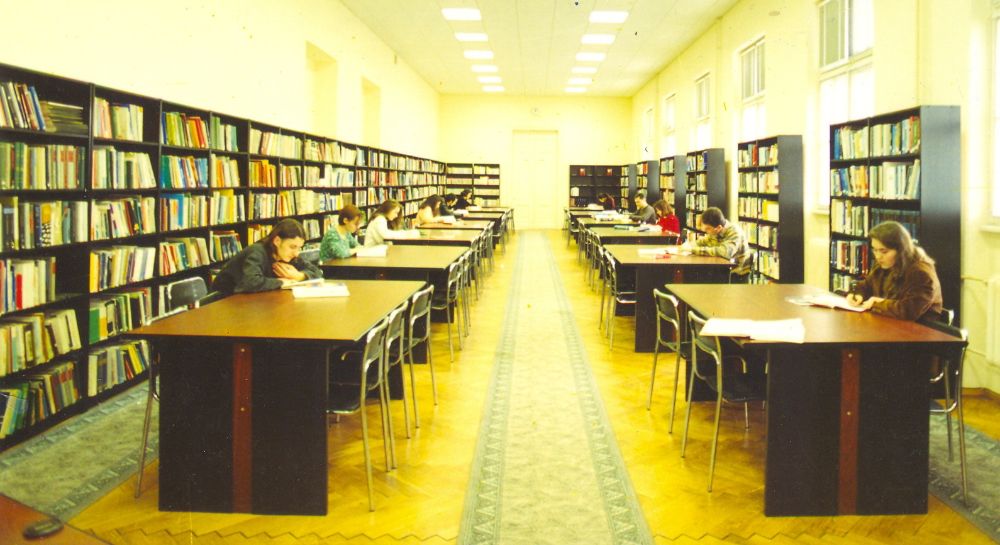Foundation
At the beginning of the 20th century, the vision and effort of some famous intellectuals led to the establishment of a higher education unit to train specialists in the economic field, an action materialized by the establishment in 1913 of the Academy of Higher Commercial and Industrial Studies (AISCI). .
The law establishing the AISCI, published in the Official Gazette in April 1913, is the birth certificate of the institution’s library. Article 20 provided: „From its own funds, the Academy shall establish, maintain and operate the practice seminars, laboratories, the library and the museum.” Aware of the role of books and study in the lives of students, several kind teachers and people of culture laid the foundations of the ASE Library through book donations. In a perfect symbiosis with the tutelary institution, the library begins to function with the beginning of the university courses, in November 1913.
The AISCI library has gone through several stages of development, from a primary existence to an organization based on clear scientific grounds, from becoming a basic pillar of the educational process to the transformation within the last two decades, namely a hybrid library that ensures specific library activities and services for information, documentation, research and individual study processes both in the classical system and through online communication and information support technologies.
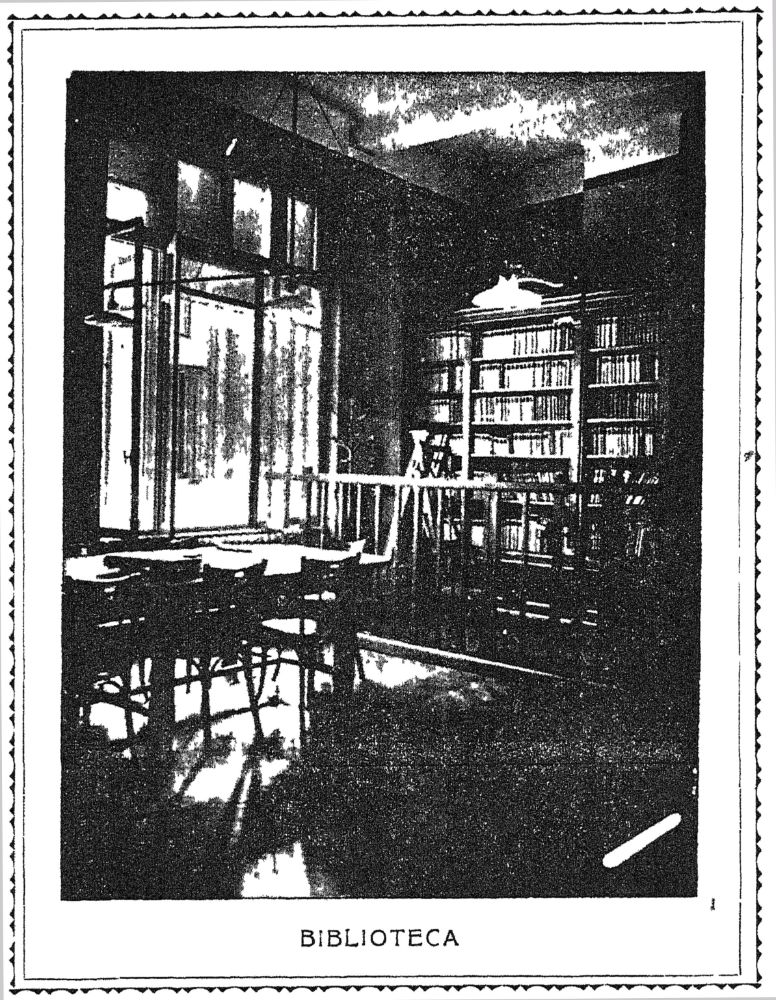
Library Reading Room (1918)
Early period
The early period is characterized by a crystallization of the collections of publications, so that only five years after the opening of the library appears a Catalog of books as an annex of the Report for 1913-1918 published by the Rectorate of AISCI, a catalog that lists about 1300 titles of monographs and 30 periodicals. The moment „1926 – the appearance of the AISCI Palace in the Roman Square” is the real debut of the library and the placement of the collections according to clear bibliography norms. The new building offers good study conditions for students and teachers, adequate book storage conditions, dedicated reading rooms, new furniture, and office space for librarians. With the publication in 1928 of the Catalog of Books, the Library was definitively transferred from the status of administrative service to that of the main department of information and scientific documentation, guided by solid library principles.
The period of glory in the history of the AISCI Library is the 1930s when there was an increase in book and periodical collections, the introduction of specific administrative acts, the appearance of the file with three catalogs, the adoption of its own Regulations, the introduction of decimal classification of publications.
The importance of the library in the educational process is fully understood by the Academy’s management, so that in 1935 a new building was inaugurated, mainly dedicated to the expansion of the Library. The building is equipped according to the most modern standards of the times: air conditioning, book lift, metal shelves in the warehouse, new furniture for reading rooms. Even King Carol II participates in the inauguration of the Library, a moment marked by the unveiling of a memorial plaque that records: “… this Library was opened as a place of light for the expansion of Romanian culture. Established through the benefaction of book lovers”. Rector Ion Răducanu, a strong supporter of the institution’s Library, valued the institution’s library with similar ones from abroad, and supported the acquisition of important book funds (i.e Manuk Bey, Herkner).
An important role in the development of the library and the organization of collections on scientific criteria was played by the two specialized directors who lead the destinies of the Library for a period of forty years: Christina Tuduri (1933-1948) and Theodor Ludu (1948-1973).
Starting with 1948, a harder period follows for the Library, the communist regime installed in power subordinating education of any level to party ideology. A large number of books and periodicals are included in the list of banned publications, the number of political-ideological subjects and party literature is increasing. Despite the shortcomings of the communist era, the Library continued to support the educational process by enriching the book fund, opening branches and documentary points and increasing the number of places for users.
Another stage of development took place in the early 1980s with the reorganization of the Library by arranging reading rooms in a system with free access to the shelf and installing modern technical components for those times (e.g. audio communication systems between readers and the central bookstore, closed circuit television installation, an electronic display panel indicating the situation of vacancies in the main reading room etc.). For quick information and promotion of newly acquired works, the library has published several bulletins of bibliographic information and economic documentation, reviews and scientific summaries; also, the professors were supported in the scientific research work and works in the bibliography field were elaborated.
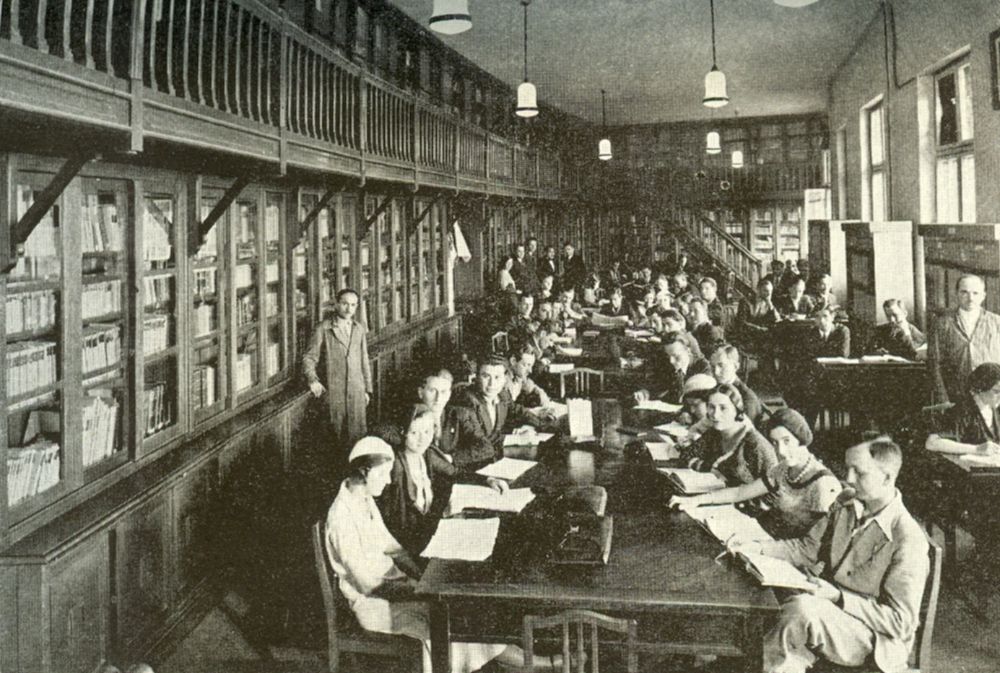
Students’ Reading Room no. 1 (1933)

Library building (1936)
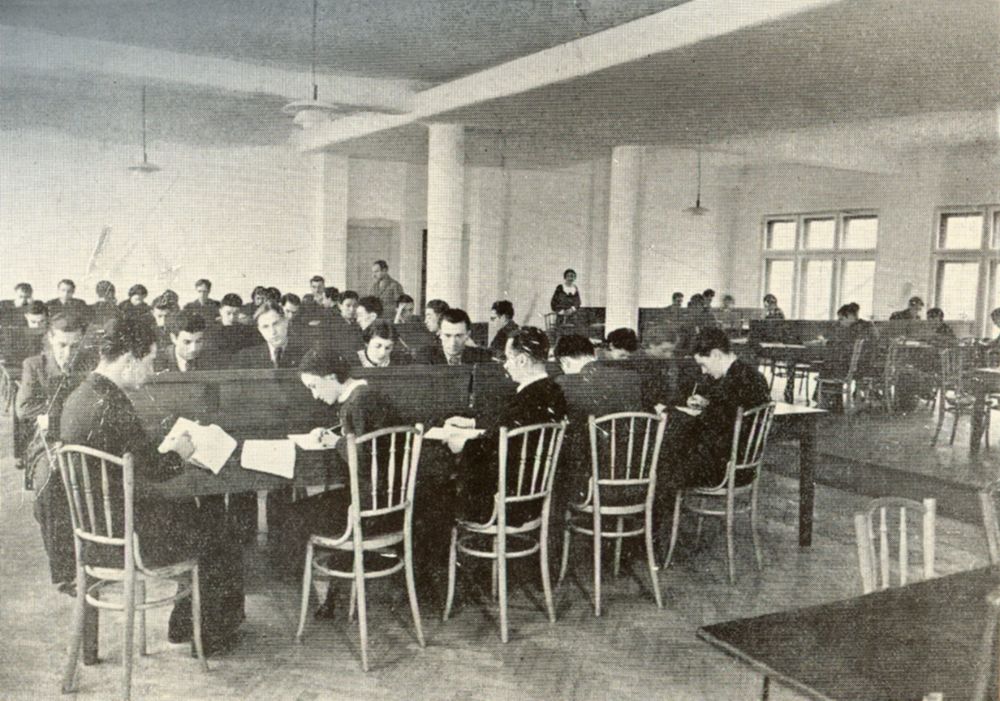
Students’ Reading Room (1935)
Modern Period
The economic and social situation and the requirements of the market economy that appeared after 1990 forced the Library to adapt its collections for the new process of training and preparation of future economists. The first post-December modernization took place in 1996 with the aim of modernizing library services to international standards and efficient use of information. The computerization of library processes and services offered to users was implemented, specialized reading rooms were opened by faculties, open shelf access was extended, the Dewey classification of publications was introduced. Computerization continues with the acquisition in 1996 of the integrated L4U library system running on the Windows platform. Access to electronic resources and databases was provided through subscriptions to ProQuest, Ebsco (since 1995) and three Reuters terminals. At the end of 2001, the Internet expanded throughout the Library and the first website and the first online catalog appeared.
Modern Period
The economic and social situation and the requirements of the market economy that appeared after 1990 forced the Library to adapt its collections for the new process of training and preparation of future economists. The first post-December modernization took place in 1996 with the aim of modernizing library services to international standards and efficient use of information. The computerization of library processes and services offered to users was implemented, specialized reading rooms were opened by faculties, open shelf access was extended, the Dewey classification of publications was introduced. Computerization continues with the acquisition in 1996 of the integrated L4U library system running on the Windows platform. Access to electronic resources and databases was provided through subscriptions to ProQuest, Ebsco (since 1995) and three Reuters terminals. At the end of 2001, the Internet expanded throughout the Library and the first website and the first online catalog appeared.
Recent years
The second radical post-December modernization takes place in the 2005-2008 period, an organizational form of the institution that still exists today. The Victor Slavescu reading room is designed and built, the main information, documentation and study center for students, teachers and researchers from the Bucharest University of Economic Studies; from an artistic point of view, we have an added value in this reading room through the two murals, entitled Feerie and Geneză, author Sabin Bălașa. Other elements that contributed to the development of the library: the appearance of new reading rooms, new furniture and modern technology, the restoration of the patrimony furniture from the Virgil Madgearu reading room, the opening of a conference room – Robert Schuman.
Library staff can be considered one of the elements that have guaranteed the success of strategies for implementing new library services and products, collection organization processes and reclassifying the publication fund according to the Dewey decimal system to implement and generalize free shelf access to collections and computerization of library activities and services, including home borrowing from all rooms.
Especially in contemporary times, the Library of the Bucharest University of Economic Studies, through the predominant economic fund of the collections in the patrimony, meets the information, documentation and study needs of the specific users and supports the education and research processes in the University. The computerized services offered through the integrated TinRead library system meet the requirements of students, teachers and researchers. Facilitating access to databases with full-text scientific journals and bibliographic and bibliometric databases, but also the purchase of book collections in electronic format or access to economic data platforms is a priority for our institution today.
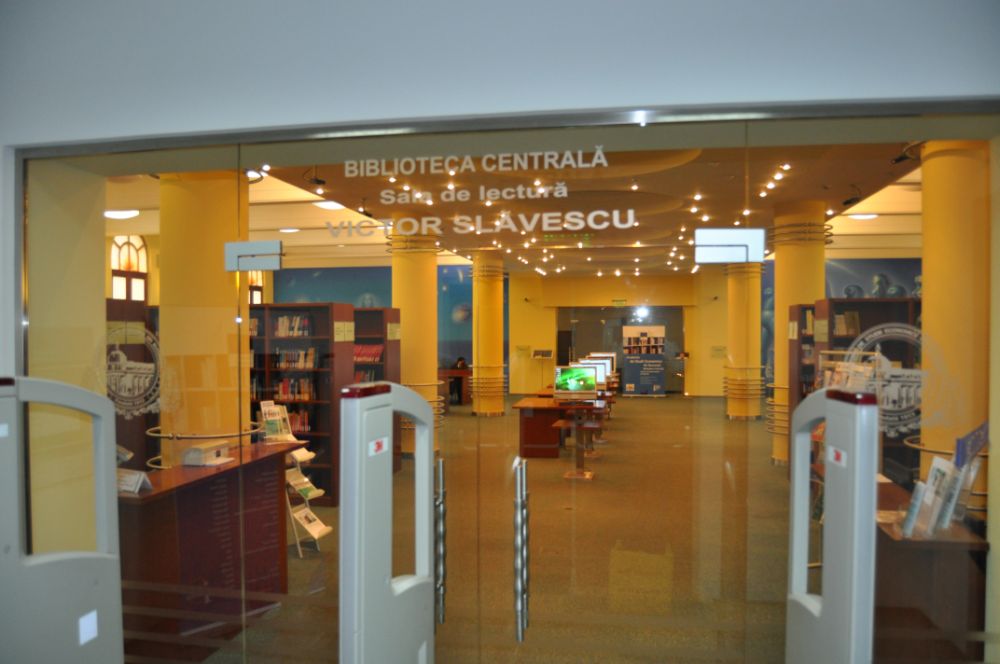
Victor Slăvescu Reading Room (after 2012)

Paul Bran Reading Room (after 2012)
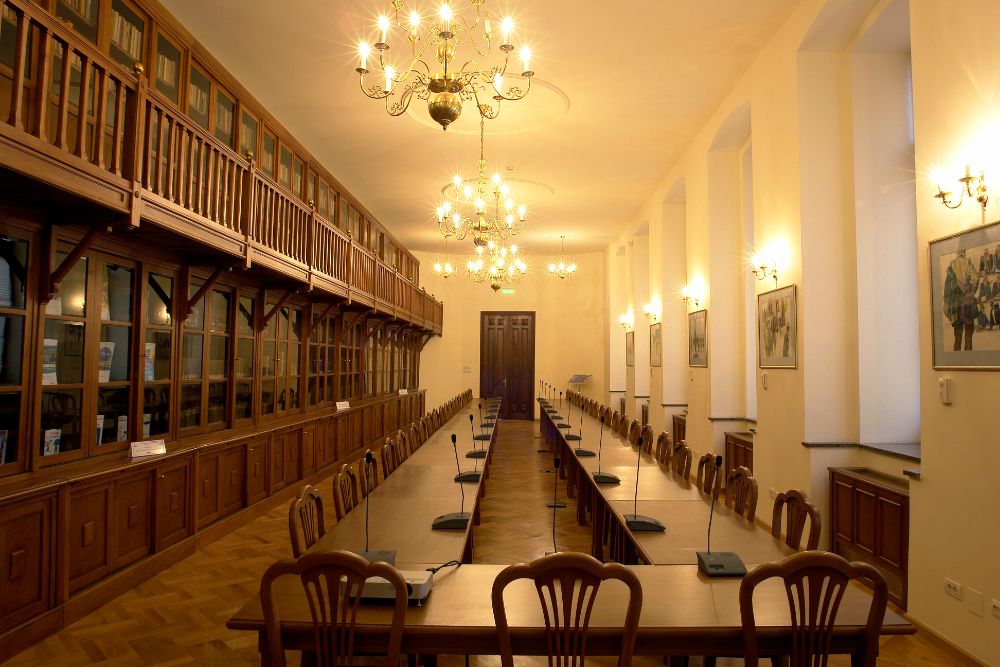
Victor Madgearu Reading Room (after 2012)
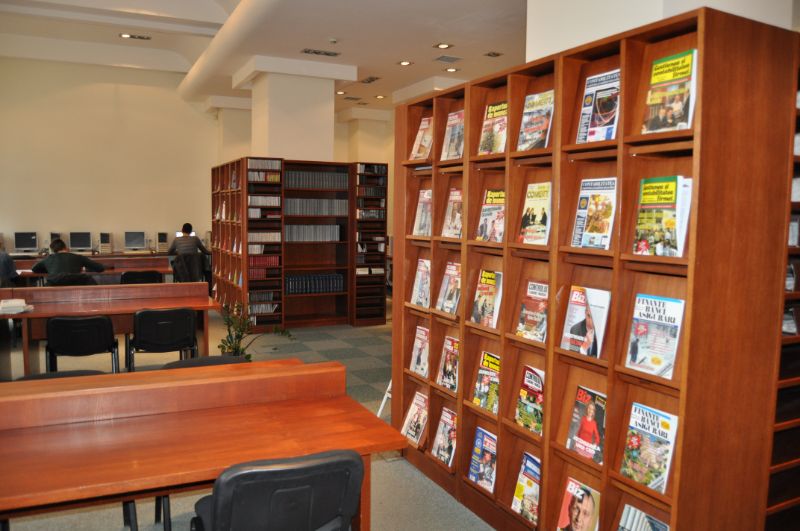
Periodicals’ Reading Room (after 2012)
We conclude this short history with a few words written in 1933 by V. Dumitriuc, the chief librarian of AISCI:
„A living library must not only be an agglomeration of volumes to impress the outside with their number, but must be in the forefront the expression of the need for real documentation of the reading public.”
More information about the Bucharest University of Economic Studies’ Library is available in the two works elaborated by the specialized staff of the library and published under the auspices of ASE Publishing House:
- Istoria Bibliotecii Academiei de Studii Economice din București (2013) / History of the Bucharest Universiy of Economic Studies’ Library (2013)
- Bibliotecari în slujba Academiei de Înalte Studii Comerciale și Industriale din București. Christina Tuduri și Theodor Ludu (2015) / Librarians in the service of the Academy of Higher Commercial and Industrial Studies, Bucharest. Christina Tuduri and Theodor Ludu (2015)
